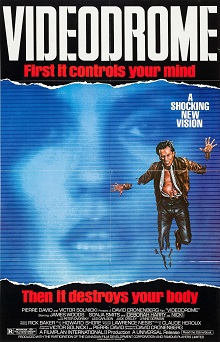After graduating from Boston University in 1988, I hung my hat in the “student ghetto” of Allston, MA for a few years. The location was great. T stop nearby. Supermarket and a Woolworth close by. Pizzaria Uno on the corner with Blanchard’s liquor store (although I want to say it was called Marty’s back in the day for before a big fire), Deli King, Allston Depot, some great Vietnamise places, Indian, and a little Mom and Pop fish restaurant my Dad liked when he came to visit.
It was right next to “sand bag” theater (Allston Cinemas) which would show second run movies. We’d catch the Claude Van Damme movies like Bloodsport, Time Cop and Cyborg there.
From Allston we’d walk down Harvard Ave. to the independent Coolidge Corner Theatre which specialized in showing aventguard, art films, International films, animation festivals, off beat movies and reruns of classics.
A short history of the Coolige Corner Theater
- 1906 – built as a Universalist church
- 1933 – Redesigned as an Art Deco movie palace
- 1988 – faced increased competition due to VCR sales and shifts in entertainment consumption the theater developers want to demolish the theater, leading to a grassroots effort to save it.
- 1989 – The theater reopened under the Friends of the Coolige Corner Theater
- 2021 – The theater was expanded
- 2024 – Theater employees unionized
When we used to go the theater it was set up with two screens. One big one on the main floor and one in the balony.
Here is an example of some of the wide variety of interesting films we’d see at the Coolige Corner Theater.
Ran (1985)
With a budget of $11–12 million, it was among the most expensive films in the history of Japanese cinema upon its release. Shakespeare’s “King Lear” is masterfully transposed to feudal Japan by Akira Kurosawa in this story of an aging lord (Tatsuya Nakadai) whose plan to pass down his kingdom to his sons quickly falls apart. After outbursts of mistrust, jealousy, and anger fracture everyone’s loyalties to one another, the monarch steadily loses his grip on reality and brings about the chaotic and violent destruction of his reign.

Videodrone (1983)
When Max Renn goes looking for edgy new material for his sleazy cable TV station, he stumbles across the pirate broadcast of a hyperviolent torture show called “Videodrome.” His attempts to unearth the program’s origins send him on a hallucinatory journey into a shadow world of right-wing conspiracies, sadomasochistic sex games, and bodily transformation.
Ironically, star James Woods became a MAGA martyr of right-wing conspiracies in his older years. Seems an afflication that effects many old white men from this era. A sad decline of a once interesting actor.

Earserhead (1977)
A dream of dark and troubling things . . . David Lynch’s 1977 debut feature, Eraserhead, is both a lasting cult sensation and a work of extraordinary craft and beauty. With its mesmerizing black-and-white photography by Frederick Elmes and Herbert Cardwell, evocative sound design, and unforgettably enigmatic performance by Jack Nance, this visionary nocturnal odyssey continues to haunt American cinema like no other film.

Night of the Living Dead (1968)
Shot outside Pittsburgh on a shoestring budget, by a band of filmmakers determined to make their mark, Night of the Living Dead, directed by horror master George A. Romero, is a great story of independent cinema: a midnight hit turned box-office smash that became one of the most influential films of all time. A deceptively simple tale of a group of strangers trapped in a farmhouse who find themselves fending off a horde of recently dead, flesh-eating ghouls, Romero’s claustrophobic vision of a late-1960s America literally tearing itself apart rewrote the rules of the horror genre, combining gruesome gore with acute social commentary and quietly breaking ground by casting a Black actor (Duane Jones) in its lead role.

Spike and Mike’s Festival of Animation
is a presentation of award-winning animated short films, annually touring throughout theaters, film festivals or college campuses in the United States.

Like a matador confronting a bull, the artist approaches his easel, his eyes blazing. As he wields his brush, we see through the canvas as the artwork unfolds, erupts, dances into being before our eyes. Pablo Picasso, the most influential artist of the twentieth century, is making a painting, and Henri-Georges Clouzot, the famous French director (The Wages of Fear and Diabolique), is making a movie. And what a movie! The Mystery of Picasso stands alone as the greatest film about art and the creator.

